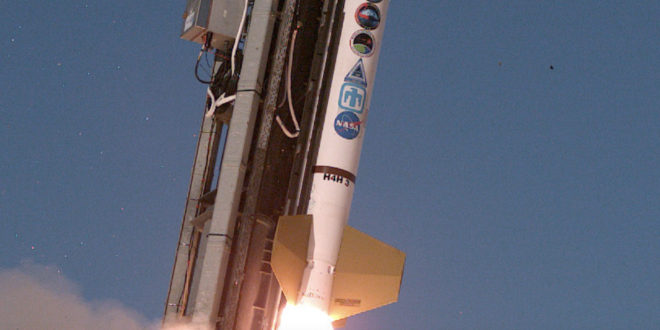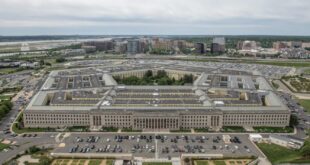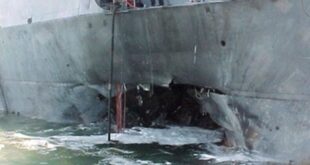Navy and Army Demonstrate Advanced Hypersonic Technologies
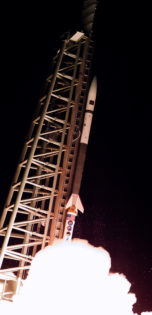
21 October 2021The Navy Strategic Systems Programs (SSP) and the Army Hypersonic Program Office (AHPO) successfully conducted a High Operational Tempo for Hypersonics flight campaign on October 20, 2021. tThis flight campaign was executed by Sandia National Laboratories (SNL) from the National Aeronautics and Space Administration (NASA) Wallops Flight Facility. This test will be used to inform the development of the Navy’s Conventional Prompt Strike (CPS) and the Army’s Long Range Hypersonic Weapon (LRHW) offensive hypersonic strike capability.
This test demonstrated advanced hypersonic technologies, capabilities, and prototype systems in a realistic operating environment. Three precision sounding rocket launches were conducted containing hypersonic experiments from partners, including CPS, AHPO, the Joint Hypersonic Transition Office, SNL, Johns Hopkins University/Applied Physics Laboratory, MITRE, Oak Ridge National Laboratory, and several defense contractors.
During weapon system development, precision sounding rocket launches fill a critical gap between ground testing and full system flight testing. These launches allow for frequent and regular flight testing opportunities to support rapid maturation of offensive and defensive hypersonic technologies.
This test is a vital step in the development of a Navy-designed common hypersonic missile, consisting of a Common Hypersonic Glide Body (CHGB) and booster, which will be fielded by both the Navy and Army with individual weapon systems and launchers tailored for launch from sea or land. The Department of Defense (DoD) successfully tested the CHGB on March 20, 2020. The Navy and Army will continue to work in close collaboration to leverage joint testing opportunities.
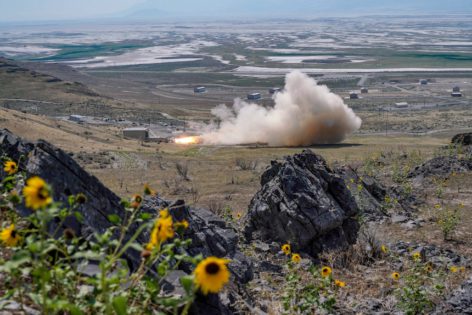
Delivering hypersonic weapons is one of the DoD’s highest priorities. Hypersonic weapons, capable of flying at speeds greater than five times the speed of sound (Mach 5), are highly maneuverable and operate at varying altitudes. The DoD is working in collaboration with industry, government national laboratories, and academia to field hypersonic warfighting capability in the early-to mid-2020s.
The Army and Navy routinely share data with Missile Defense Agency that supports its work on hypersonic defenses.
Navy Tests Second Stage Hypersonic Rocket Motor
26 August 2021
From Navy Strategic Systems Programs Public Affairs
WASHINGTON – Navy Strategic Systems Programs (SSP) successfully conducted a test of the Second Stage Solid Rocket Motor (SRM) on August 25th in Promontory, Utah as part of the development of the Navy’s Conventional Prompt Strike (CPS) offensive hypersonic strike capability and the Army’s Long Range Hypersonic Weapon (LRHW).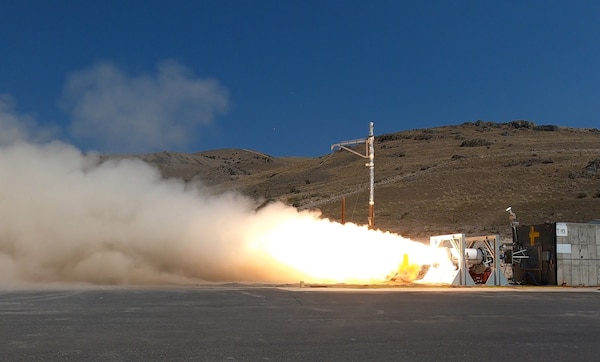
The second stage SRM will be part of a new missile booster for the services, and will be combined with a Common Hypersonic Glide Body (CHGB) to create the common hypersonic missile. Each service will use the common hypersonic missile, while developing individual weapon systems and launchers tailored for launch from sea or land. This successful SRM test represents a critical milestone leading up to the next series of Navy and Army joint flight tests and will lead to the fielding of the CPS and LRHW weapon systems.
The Department of Defense successfully tested the CHGB on March 20, 2020. The services are working closely with government national laboratories and industry to continue development and production of the CHGB. The Navy is the lead designer of the CHGB, and the Army leads production of the CHGB.
Information gathered from this and future tests will further inform the services offensive hypersonic technology development. The Department of Defense (DoD) is working in collaboration with industry, government national laboratories, and academia to field hypersonic warfighting capability in the early-to mid-2020s.
Hypersonic weapons, capable of flying at speeds greater than five times the speed of sound (Mach 5), are highly maneuverable and operate at varying altitudes. In a matter of minutes, Navy and Army warfighters can defeat high-value targets hundreds or even thousands of miles away. Delivering hypersonic weapons is one of the DoD’s highest priorities.
The common hypersonic missile design for sea and land-based applications provides economies of scale for future production, and relies upon a growing U.S. hypersonics industrial base.
Northrop Grumman Corporation (NYSE: NOC) has broken ground on a Hypersonics Center of Excellence to support the U.S. military and its allies in the fight against evolving threats. Through its investments in digital engineering and smart infrastructure at its Elkton, Maryland facility, Northrop Grumman will provide full lifecycle production for hypersonic weapons, from design and development to production and integration. Northrop Grumman has broken ground on a new engineering and hypersonic production facility at Elkton that will support full lifecycle production for hypersonic weapons.
Northrop Grumman has broken ground on a new engineering and hypersonic production facility at Elkton that will support full lifecycle production for hypersonic weapons.
“Hypersonic weapons protect our warfighters by offering higher speeds, longer ranges, optimal performance and the ability to combat a threat with as much distance in between them and the threat as possible,” said Rebecca Torzone, vice president, missile products, Northrop Grumman. “Our new hypersonics production facility will optimize our development efficiency, drive affordability, and ultimately deliver weapons to our warfighters faster.”
The new 60,000-square foot facility will feature state-of-the-art production technology and will implement digital engineering best practices that will result in increased agility and the ability to respond to changes in technology or customer mission needs quickly.
Northrop Grumman plans to automate case preparation and non-destructive inspection (i.e. X-Ray) technology, as well as deploy autonomous guided vehicles to improve safety and reliability. These new offerings will also drive demand for additional technically skilled high-wage jobs, engineers and other professional roles at the Elkton facility. Construction is expected to conclude by 2023.
 Soldier of Fortune Magazine The Journal of Professional Adventurers
Soldier of Fortune Magazine The Journal of Professional Adventurers


